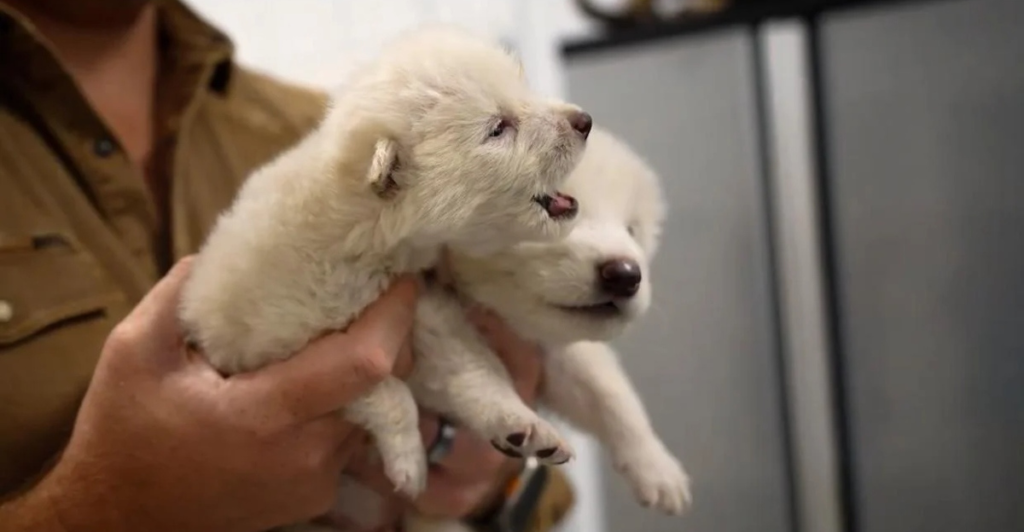
They roamed the Americas alongside saber-toothed cats and woolly mammoths—and vanished over 12,000 years ago. Most assumed dire wolves, like dinosaurs, were gone for good. But in a stunning twist, scientists have brought them back. With thick white fur and piercing eyes, the first dire wolf pups are alive today thanks to breakthrough gene editing. It’s not a movie or myth—it’s real. Here’s how researchers turned ancient DNA into a living legend.
Resurrection Reality: The First True De-Extinction Event
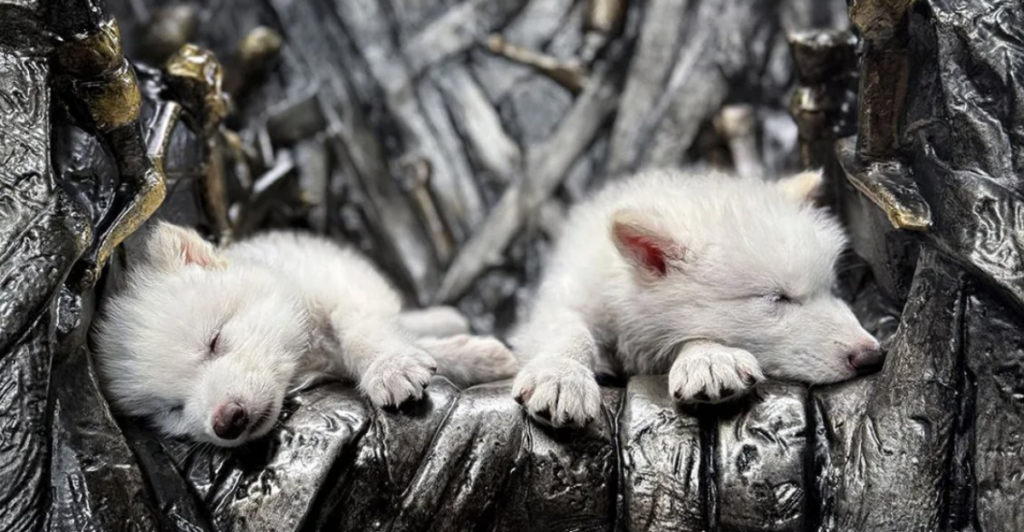
In a monumental scientific achievement that redefines what we understood about extinction, Colossal Biosciences has successfully revived the dire wolf (Aenocyon dirus), a species that vanished from Earth approximately 12,500 years ago.
A U.S. biotechnology company has announced the birth of three healthy dire wolf pups, marking the world’s first true de-extinction event. The pups, named Romulus, Remus, and Khaleesi, were born through a combination of advanced genetic engineering, ancient DNA analysis, and innovative cloning techniques.
It’s a demonstration that humanity can now reach across millennia and bring back life once believed lost forever—an act that carries enormous implications for everything from conservation to ethics to ecological engineering.
How Scientists Rebuilt the Dire Wolf

Researchers extracted fragments of DNA from two unusually well-preserved dire wolf fossils—a 13,000-year-old tooth from Ohio and a 72,000-year-old skull from Idaho. These samples yielded enough genetic information to reconstruct critical parts of the dire wolf’s genome, bypassing degraded samples from La Brea Tar Pits.
The team identified 20 key genetic variations responsible for dire wolf traits—like their massive jaw structure, pale coat, and larger body size—and used CRISPR technology to engineer those into gray wolf DNA.
Then, using a novel technique involving blood-derived endothelial progenitor cells, they created viable embryos implanted into domestic dog surrogates. What emerged were creatures of the past, reborn through the fusion of paleogenetics, bioengineering, and mammalian cloning.
Dire Wolves: Apex Predators with a Prehistoric Past
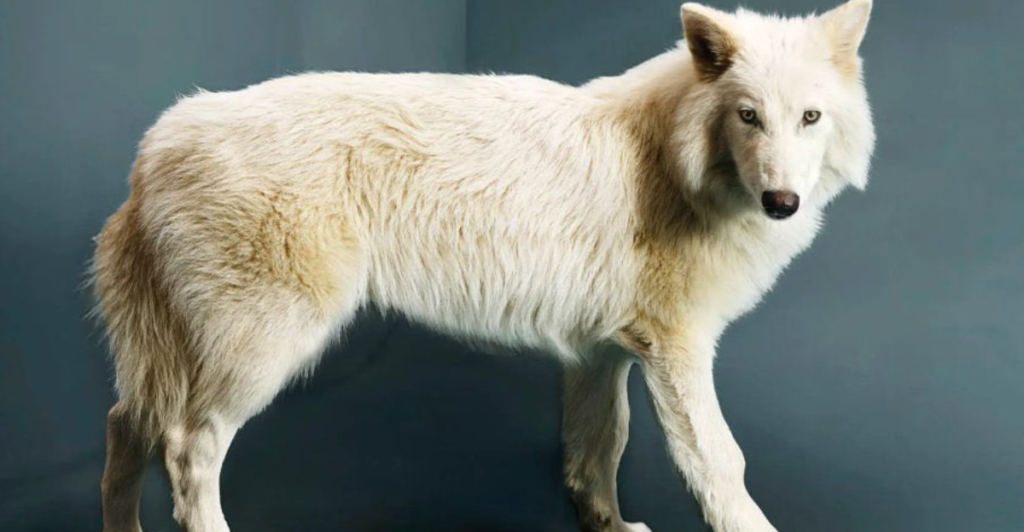
Before their extinction over 12,000 years ago, dire wolves ruled Ice Age North America. Larger and more robust than modern gray wolves, they hunted giant bison, prehistoric horses, and even young mammoths. They could weigh up to 140 pounds (63.5 kg) and crush bone with their powerful jaws.
While sharing 99.5% of DNA with gray wolves, dire wolves were not simply larger cousins. They had evolved separately for nearly six million years, developing unique adaptations to their environment. Unlike wolves, which survived into modern ecosystems, dire wolves vanished with the Pleistocene megafauna, likely due to a mix of climate change and food scarcity.
Their sudden disappearance left ecological gaps, and their mysterious legacy inspired legends, from Native American lore to the fantasy creatures of Game of Thrones—until now, no more than memory.
Meet Romulus, Remus, and Khaleesi: The Pups of a New Era

Born in late 2024 and early 2025, the first three dire wolf pups—Romulus, Remus, and Khaleesi—represent the dawn of a new biological era. At just six months old, they already weigh over 36 kg (79 pounds) and measure nearly four feet in length.
Their piercing eyes and thick white fur resemble the fantasy beasts of fiction, but they are real, living animals. Scientists specifically edited pigmentation genes MC1R and MFSD12 to achieve their snowy coats, avoiding mutations that could cause blindness.
While physically faithful to their extinct ancestors, the pups don’t exhibit learned behaviors like coordinated hunting—those would’ve been passed through social experience, not DNA. They now live in a vast, high-security reserve hidden from the public, monitored around the clock. For now, they are living artifacts—but their story is just beginning.
Engineering the Impossible: The Tech That Made It Happen

Resurrecting the dire wolf wasn’t just about science—it was about solving impossible problems. Colossal Biosciences generated over 12.8-fold genome coverage, far surpassing previous efforts to decode ancient DNA.
The challenge wasn’t just sequencing extinct DNA—it was making it viable inside a living creature. The team used CRISPR to make over 20 simultaneous edits in gray wolf cells, customizing traits like jaw shape and coat color while avoiding known genetic defects. Instead of relying on invasive tissue biopsies, they pioneered a technique using blood-derived endothelial progenitor cells.
These were fused with enucleated gray wolf eggs and implanted in dogs—a surprisingly effective interspecies surrogate strategy. This technology stack—combining paleogenomics, gene editing, and synthetic embryology—is now a replicable platform for reviving other species.
Conservation Reimagined: A Genetic Lifeline for Endangered Species
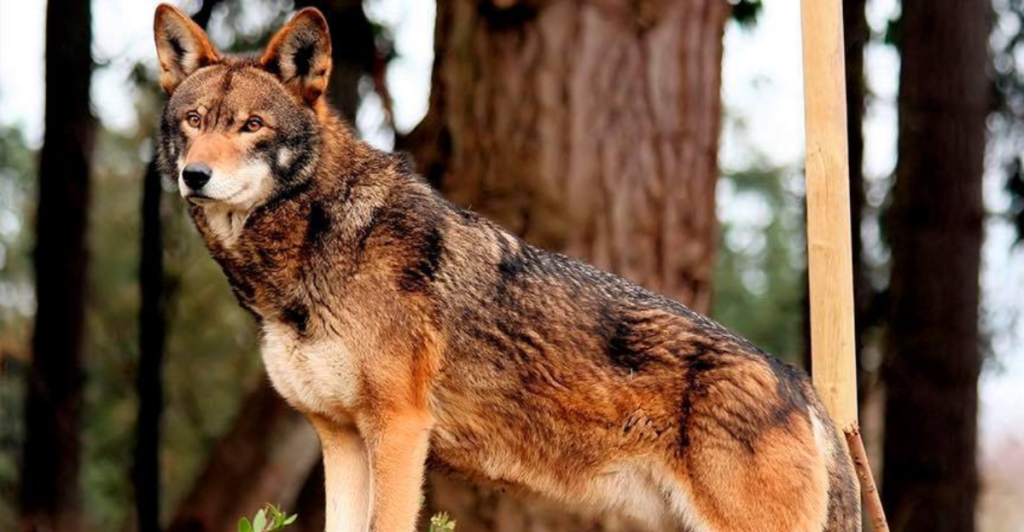
Though dire wolves grab headlines, the broader impact lies in how this tech can save endangered animals. Colossal has already used similar methods to clone red wolves—an American species on the brink, with fewer than two dozen individuals in the wild.
By enhancing genetic diversity through controlled gene editing, the company aims to strengthen at-risk populations. Their work now extends to pink pigeons, northern white rhinos, and even coral species. The goal isn’t just revival—it’s resilience.
Conservation has long depended on habitat protection and breeding programs, but de-extinction tools open new frontiers: inserting genes for disease resistance, climate tolerance, or reproductive strength. While not a substitute for traditional conservation, these technologies may soon be essential in a world of rapid environmental change.
What Happens to Nature When Lost Species Return?
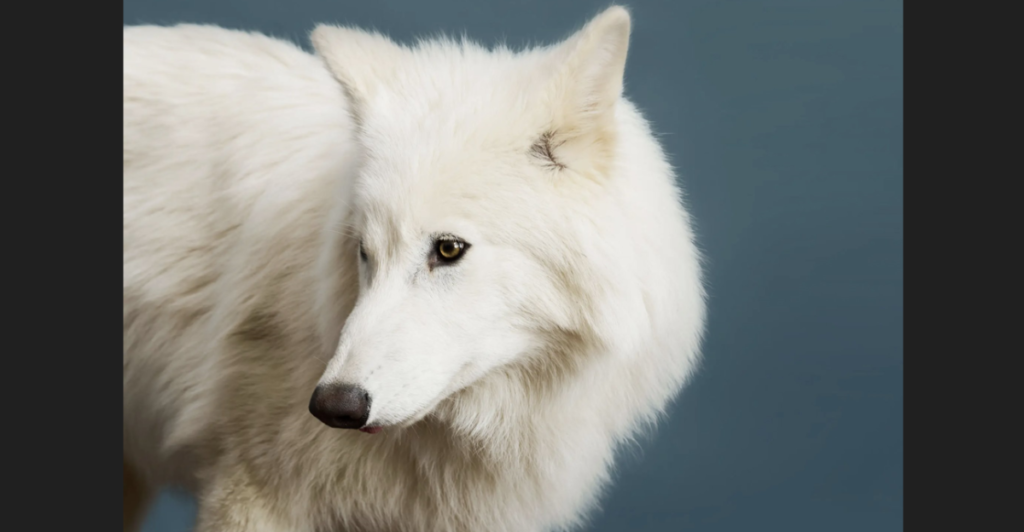
Bringing a predator like the dire wolf back could eventually restore balance to ecosystems—but only if done carefully. Past successes like the Yellowstone wolf reintroduction show how apex predators can regulate prey and promote biodiversity.
But dire wolves are different. They’ve been gone for over 12,000 years, and their ecological niche no longer exists in full. Unlike wolves returning to familiar terrain, these resurrected canids lack the cultural knowledge passed down through packs—how to hunt, roam, and form hierarchies.
Their ecological role may be lost to time. Yet this revival offers a test case: Could engineered keystone species one day be reintroduced to rewild broken ecosystems? If Colossal can scale the method to woolly mammoths by 2028, tundra restoration and carbon sequestration might follow.
Is It Ethical to Bring Back the Dead?
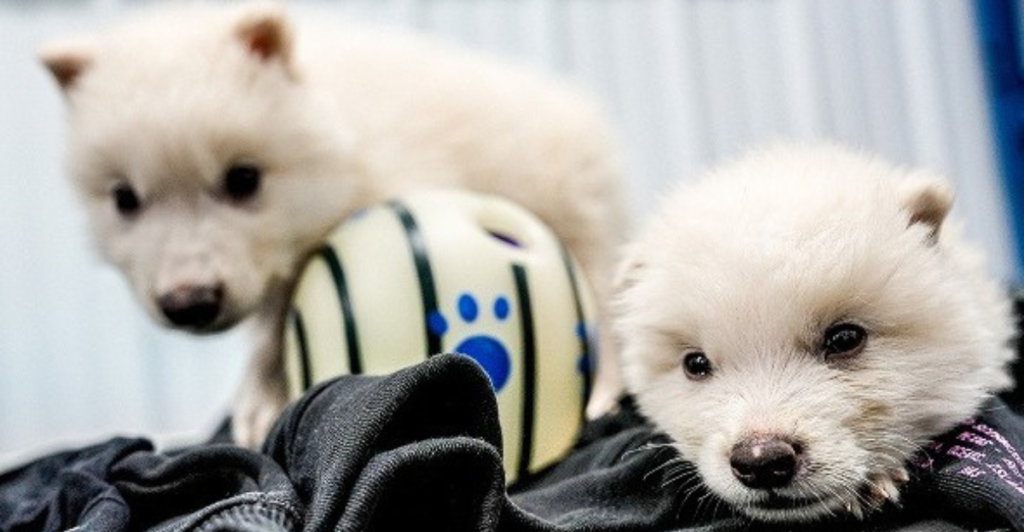
The resurrection of dire wolves sparks a fierce ethical debate. Are we restoring lost wonders or creating new animals for spectacle? These pups weren’t brought back to fix an ecosystem—they were engineered as proof of concept, partly funded by celebrities and venture capital.
Critics worry this “designer de-extinction” prioritizes hype over responsibility. Others ask if resources might be better spent saving species we’re losing today. Animal welfare advocates question whether these engineered wolves can live fulfilling lives, especially if they can’t express natural behaviors or form authentic social bonds.
And what rights should a revived species have? As de-extinction moves from lab to wild, we must build new ethical frameworks. This isn’t just about science—it’s about defining our role in nature and ensuring awe doesn’t eclipse accountability.
What Comes Next?
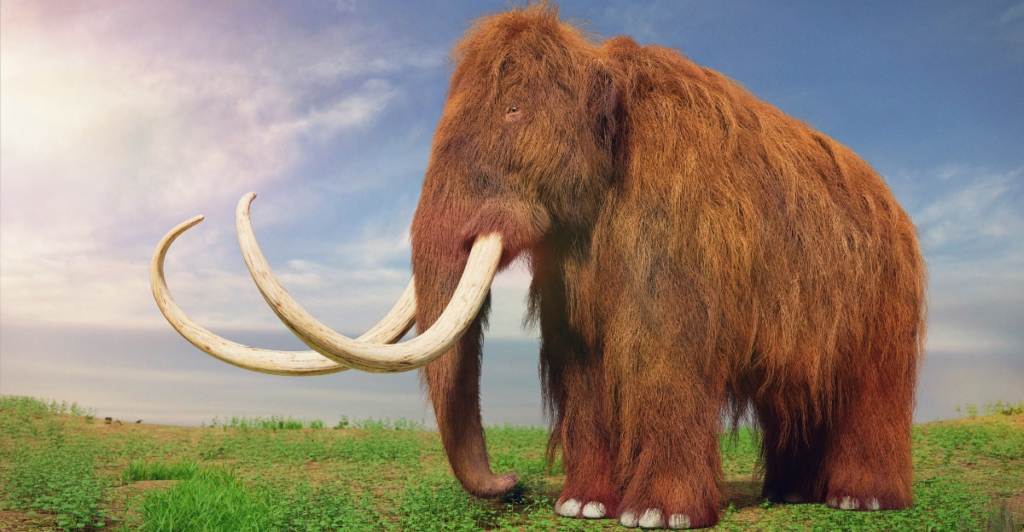
The dire wolf is only the beginning. Colossal Biosciences has a bold lineup of resurrection projects underway, including the woolly mammoth, dodo, and Tasmanian tiger. In 2025, they debuted the “woolly mouse”—a proof-of-concept creature with thick fur mimicking mammoth genes.
By 2028, they hope to reintroduce mammoth-like elephants to the Arctic tundra, where their grazing patterns could help combat climate change. But these aren’t just stunts—they’re part of a long-term vision to build a “de-extinction toolkit” applicable across industries.
Engineered traits like disease resistance or extreme cold tolerance may one day be used in agriculture, livestock, or even human medicine. The dire wolf’s return signals a future where extinction is reversible and biodiversity is programmable.
Redefining Extinction: A Transformed Relationship with Nature
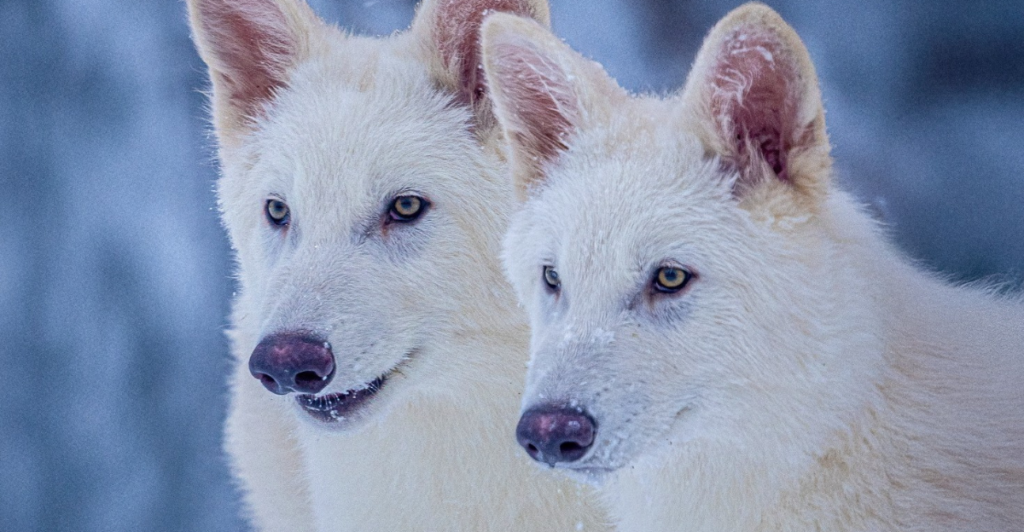
The dire wolf’s resurrection rewrites a fundamental rule of nature: death, in some cases, may no longer be final. But with this power comes deep responsibility. De-extinction is not just a scientific marvel—it’s a societal mirror.
It forces us to rethink what it means to protect life, what we owe to species we once lost, and how far we’re willing to go to fix the damage we’ve done. It challenges conservationists to embrace biotech, ethicists to rethink animal rights, and policymakers to write rules for a future where “natural” and “engineered” blur.
As the world faces a sixth mass extinction, the dire wolf’s return gives hope—but also demands caution. We now have the tools to reverse extinction. The question is: will we use them wisely, or recklessly reshape the wild in our own image?
Explore more of our trending stories and hit Follow to keep them coming to your feed!

Don’t miss out on more stories like this! Hit the Follow button at the top of this article to stay updated with the latest news. Share your thoughts in the comments—we’d love to hear from you!







